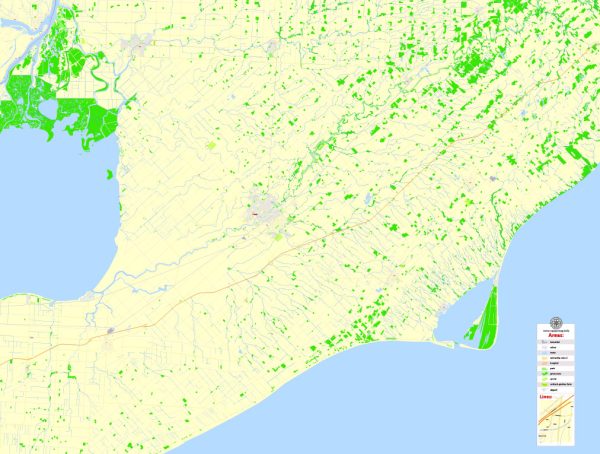Wallaceburg and Chatham are neighboring communities located in the province of Ontario, Canada. Each has its own distinct history of urban development. Here is an overview of the urban development history of Wallaceburg and Chatham:
Wallaceburg:
- Early Settlement:
- Wallaceburg’s history traces back to the 19th century when it was established as a settlement along the Sydenham River. Its early development was influenced by the river, providing access to transportation and resources.
- Industrialization:
- The late 19th and early 20th centuries saw industrial growth in Wallaceburg, particularly with the establishment of manufacturing facilities. Industries such as shipbuilding and glass production played a significant role in shaping the local economy.
- World Wars and Economic Shifts:
- Wallaceburg, like many Canadian communities, played a role in both World War I and World War II. The wars brought economic shifts and industrial changes to the region. After the wars, the economy adapted to new challenges.
- Continued Industrial Presence:
- Wallaceburg maintained an industrial presence into the latter half of the 20th century, with a focus on manufacturing and production facilities.
- Community Development:
- Over the years, Wallaceburg has experienced community development, including the establishment of schools, healthcare facilities, and recreational spaces to meet the needs of its residents.
Chatham:
- Early Settlement and Development:
- Chatham’s history dates back to the early 19th century when it was settled as a result of its strategic location along the Thames River. The settlement’s growth was fueled by agriculture, trade, and transportation.
- Underground Railroad:
- Chatham played a significant role in the Underground Railroad during the 19th century. The city was a destination for many escaped slaves seeking freedom in Canada.
- Economic Growth:
- Chatham’s economy grew throughout the 19th century, with a focus on industries such as agriculture, milling, and manufacturing. The city became a regional center for commerce and trade.
- Industrialization and Innovation:
- The late 19th and early 20th centuries saw Chatham’s industrialization, with the establishment of factories and manufacturing facilities. The city became known for its innovative industries.
- World Wars and Post-War Changes:
- Chatham contributed to the war effort during both World War I and World War II. The post-war period brought changes to the local economy and urban landscape.
- Automotive Industry:
- Chatham became known for its automotive industry, with the presence of manufacturing plants. The automotive sector played a crucial role in the city’s economy.
- Modern Developments:
- In more recent years, Chatham has undergone modern developments, including infrastructure improvements, commercial growth, and community initiatives.
- Cultural and Recreational Facilities:
- Chatham has invested in cultural and recreational facilities, including museums, theaters, and parks, enhancing the quality of life for residents.
- Education and Healthcare:
- The city is home to educational institutions and healthcare facilities, providing essential services to the community.
- Agriculture and Agribusiness:
- Agriculture continues to be a vital part of Chatham’s economy, with a focus on agribusiness and food processing.
Both Wallaceburg and Chatham have played important roles in the economic and cultural landscape of southwestern Ontario. Their histories reflect a mix of industrial development, agricultural prominence, and community resilience. Today, they continue to evolve as part of the broader economic and social fabric of the region.


 Author: Kirill Shrayber, Ph.D.
Author: Kirill Shrayber, Ph.D.